The move back to hardware jams is in full force. And what better sign than Roland re-introducing the MC groovebox line – with the full-sized MC-707 and pint-sized MC-101. The reason you know it’s not the 1990s? They advertise them as replacing your laptop.
MC-707: US$999.99
MC-101: US$499.99
Available this month.
Roland originated the term Groovebox when it introduced its MC-303 in 1996. But the idea is pretty simple – if for a lot of genres, you want something that does sequencing, makes sounds (pitched and drum), and plays back samples, maybe you might like all of those things in a single box.
So, for instance, you could right now fairly easily put together a TR-8S (for drums), a TB-03 (for bassline), and, say, a polysynth or sampler, but you’d then need a fair number of cables and a mixer. The groovebox ditches the cables and integrates the workflow.
Inside that generic template, it’s not totally clear what a groovebox should look like exactly. So let’s have a first look at the 2019 Rolands.
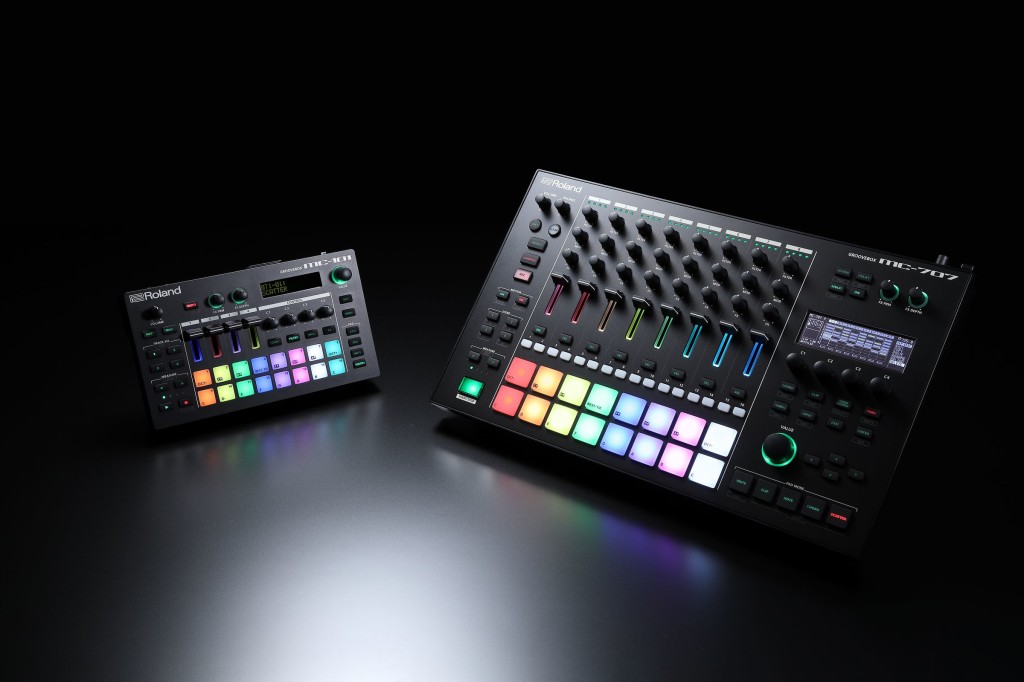
Full Dinner or Happy Meal
As per usual, the numbers (707 and 101) have nothing to do with previous Roland models, since the MC line have a more or less generic character. (So don’t confuse them with the TR-707 and SH-101.)
The idea now is, there’s a full-sized, 8-track model, the MC-707, which looks a lot like a TR-8S. And then there’s a baby sibling, the 4-track MC-101.
Roland gave me a choice of which I wanted, and me being me, I immediately said – send me the ones that’s cheaper, smaller, and battery-powered. I mean, obviously. (That kind of gets away from the all-in-one MC groovebox approach, but then that’s exactly what makes it interesting.)
You might think the MC-101 had a different engine inside. It apparently doesn’t. Both units share what Roland calls the “ZEN-Core” sound generator, which is capable of playing both tones (that is, it’s a synthesizer), and drum kits (so it’s doing sample playback.)
That means both MC models include a sampled drum machine, a simple synth, play back samples (as drum kits / one-shots), play back loops, and provide effects.
You get pads for playing melodies, triggering drums, and triggering loops/patterns, some faders for mixing, and knobs for effects and sample manipulation (time/pitch).
And you get those on both units – the most noticeable difference on the MC-707, aside from having more of everything, is a bigger screen and more dedicated buttons.
Roland have also kept the assumption from the ’90s and noughts MC models that you want a bunch of sample content preloaded. They’re so convinced of this, in fact, that they’ve screwed a protector over the SD card slot – but of course, that’s absurd, and you’ll take it off and use your own samples, too. (More on that in a bit.)
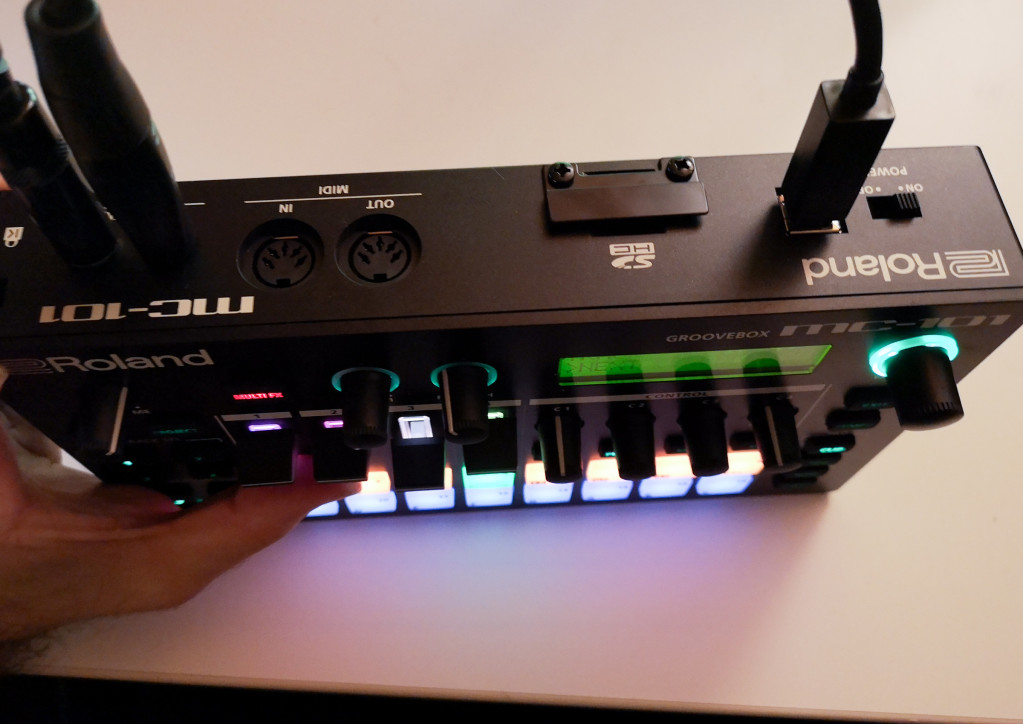
The result looks for all the world like a TR-8S had a love child with a Novation Circuit, then got into the same Kindergarten that trained the MC-505. But it’s got a workflow that feels most like the TR-8S than anything, down to similar menu navigation (and clearly shares some architecture, as well as elements of the mechanicals and form factor). This is a product that came out of someone taking the TR-8S and saying it needed to have pitched playback and looping and work as an MC.
By the numbers
Specs – which as you’ll see are weirdly almost the same on the MC-101, even in a fraction of the size and half the price:
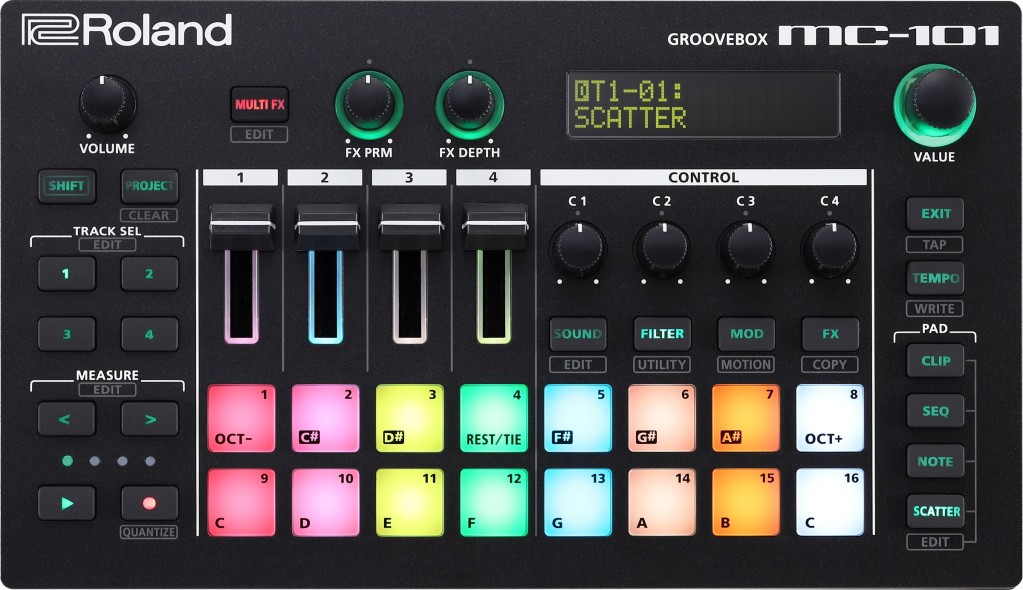
Tone, Drum Kit, Looper (Audio Loop) track types / sound generators
4 tracks (MC-101) or 8 tracks (MC-707)
16 clips per track (so 64 clips on the 101, 128 on the 707)
3000+ preset Tones
80+ preset Drum Kits
Effects: Chorus/Delay (9 types), Reverb (7 types), 90 Track Multi-Effects, Track EQ, 90 different Master Effects, Master Compressor, Master EQ
64-step Step Sequencer
SD card slot
256 x 80-dot backlit graphic LCD (MC-707), 16 characters, 2-line LCD with backlight (MC-101) – that 101 screen is the same as on the TR-8S
The TONE generator is not to be overlooked, in that this engine has tons of presets for classic Roland gear. I’m talking to Roland about how these are produced, since they seem not to be the ACB we know from the Boutiques, but they’re at least usable – even if you can’t tweak them so much.
Taking a page from the Circuit, you get four macro controls for tweaking. There are dedicated buttons that let you control sound parameters (for that TONE generator), filter, modulation, and effects. (The MC-707 misses the opportunity to do eight encoders instead of four so — basically, just get the 101, as I said!)
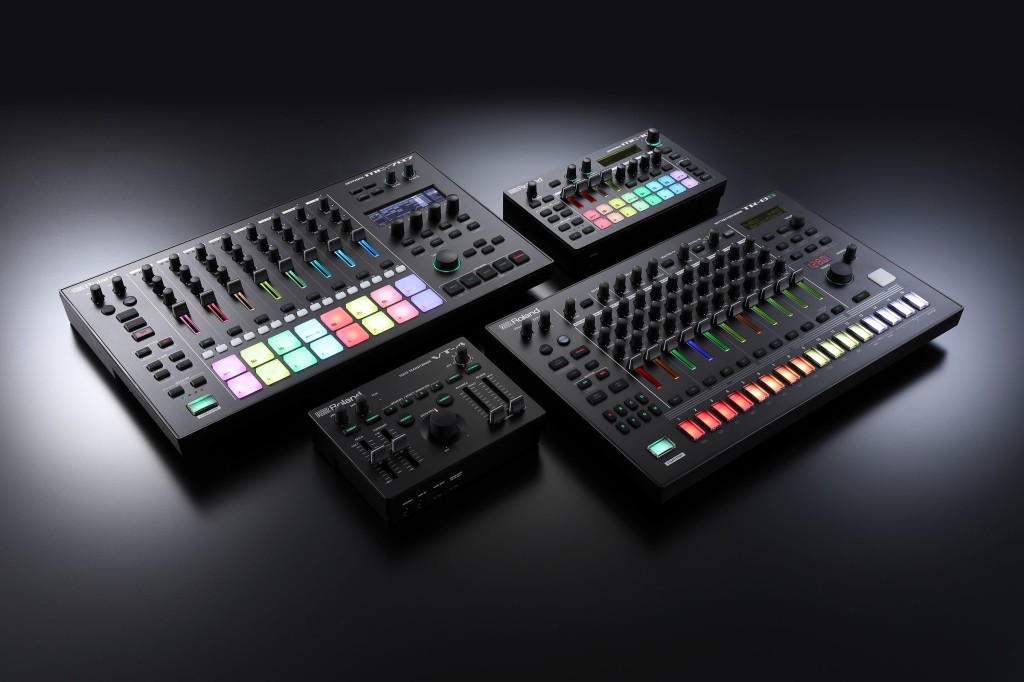
Connectivity. The biggest difference between the MCs is actually I/O. On the MC-707, you get a 1/4″ headphone jack, mix out stereo, assignable out stereo, and dedicated stereo send/return, plus MIDI in and two outs, and USB (audio/MIDI.
The tiny MC-101 of course can’t fit that, so you get just a minijack headphone, 1/4″ stereo output, MIDI in, MIDI out, and USB (audio/MIDI).


Sample power – or lack thereof. The Looper supports samples up to about 60 seconds. So, this isn’t a backing track machine or an Ableton Live killer, but that’s not the point – you’re supposed to be playing live, so the MC isn’t really about leaving anything going for longer than a minute, if that.
The trick is that internal sample memory is limited – irrespective of how spacious a sound card you use. That tops out at 6 minutes stereo, 12 minutes mono, at 44.1/16-bit WAV (which is the minimum format). Here’s where Roland is unpleasantly stuck in another decade. There’s no earthly reason a modern device couldn’t have more internal sample storage or support decoding lossless formats, or both.
But then I think the thing to do is ignore all this “replace your laptop” business and judge this as an MC.
More disappointing than the hardware limitations, there’s no live sampling. That’s a shame, because it would start to define the MC series more as a hardware instrument – and it has been a feature on an MC in the past.
Why you might want the 707
Roland PR didn’t really describe the MC-707 as I would. Yes, one is four track and one is eight track.
But apart from being eight track, the major difference in the MC-707 is that the workflow mirrors that of the TR-8S. Take a look at the panel:
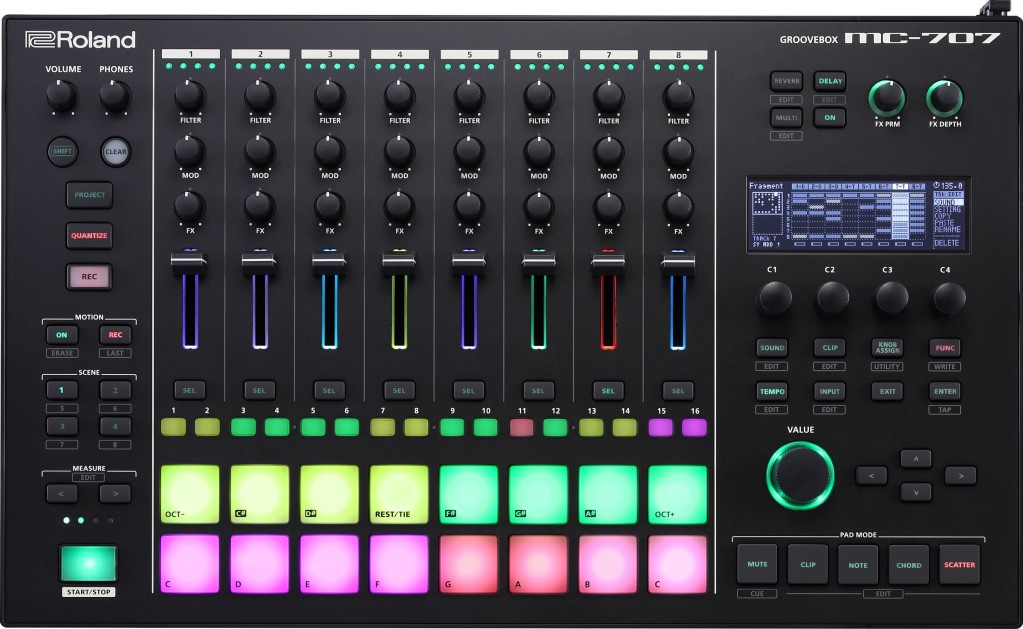
Not only are there more dedicated controls generally, but you get the ability to control motion recording, and per-track parameters for effects/mod/filter. Just having a similar layout to the TR-8S means you can make use of some muscle memory acquired on the TR.
And the added display opens up real on-hardware sample editing.
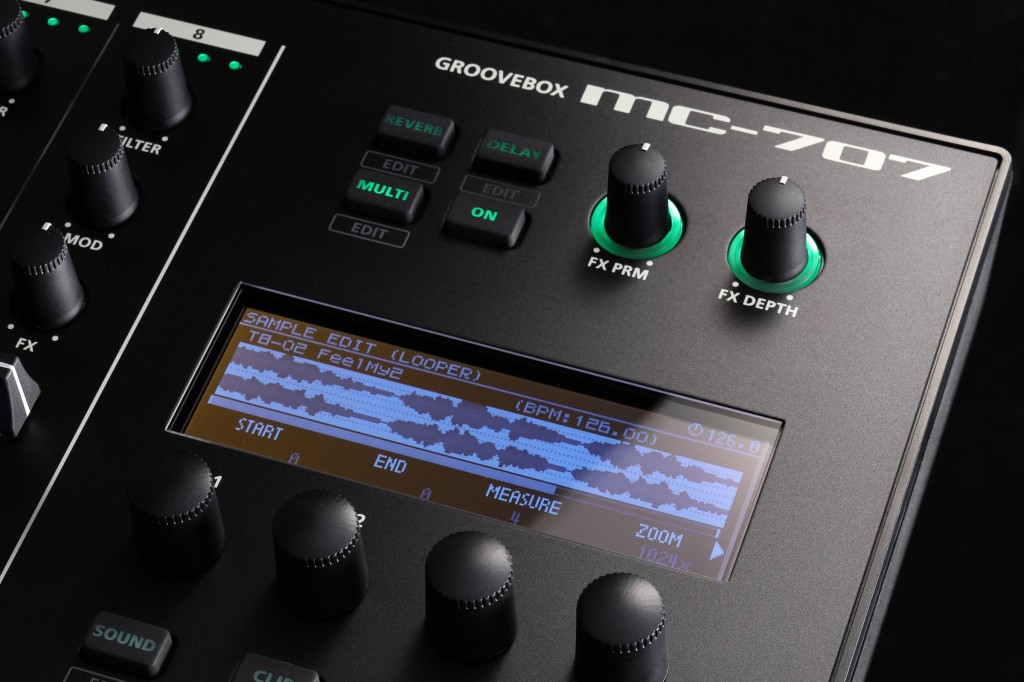
If you don’t own a TR-8S, you might just opt for the MC-707 alone – and do everything on one unit. If you do, you might put the two side by side for lots of dedicated controls.
And this might give TR-8S owners some buyers’ remorse just as the TR-8S (with its better effects and custom samples) did for the original AIRA TR-8.
I am pretty happy keeping the TR-8S for its dedicated modeled drum controls. And I think there’s some appeal to the MC-101, in combination with another drum machine – partly because you can tuck it into an existing gear bag, and because while its workflow is pretty basic, it gets interesting as an instrument.
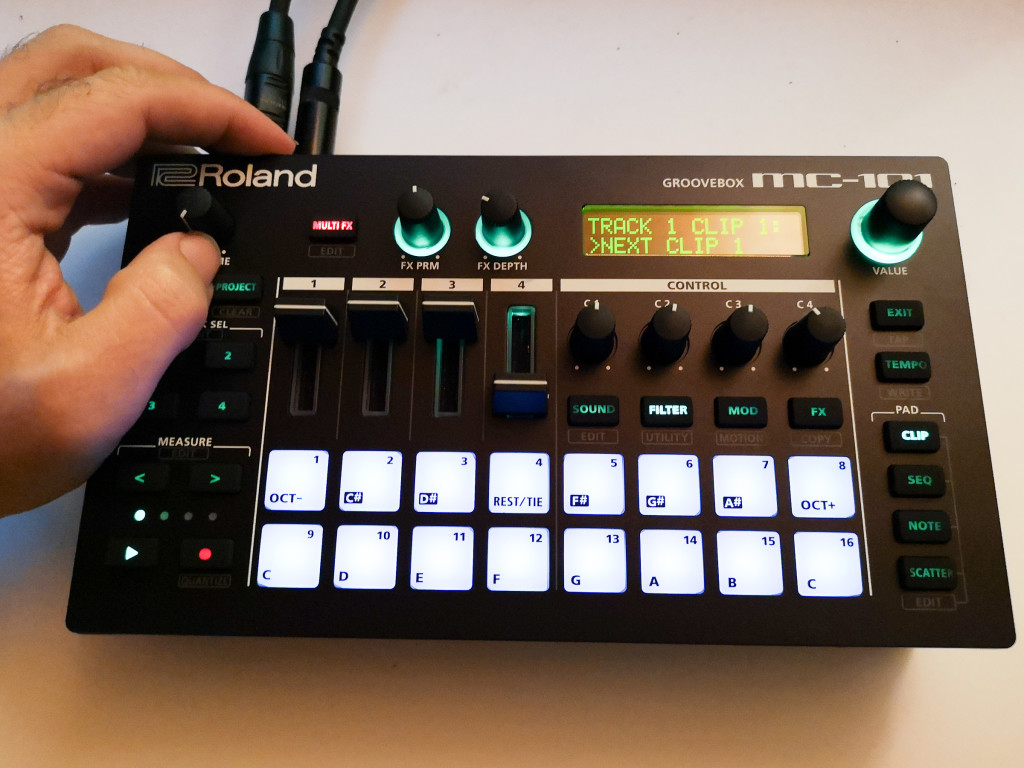
First look: MC-101
I’ve already started learning and practicing the MC-101. And practicing is really what it’s about, because I think you want to play this thing like an instrument.
Unboxing the MC-101 is actually a treat. This thing is tiny. It makes even a Novation Circuit look large. That means it starts to take on a new role that its larger sibling and MCs of the past never had. It’s suddenly easy to add some pitched sample playback next to your drum machine, or just easily fire off loops and patterns.
In other words, it lets the groovebox have an entirely different role than the one for which it was first envisioned. The MC-101 fits in easily with your drum machine and bassline synth and whatever effects and pedals you’ve got for a live rig.
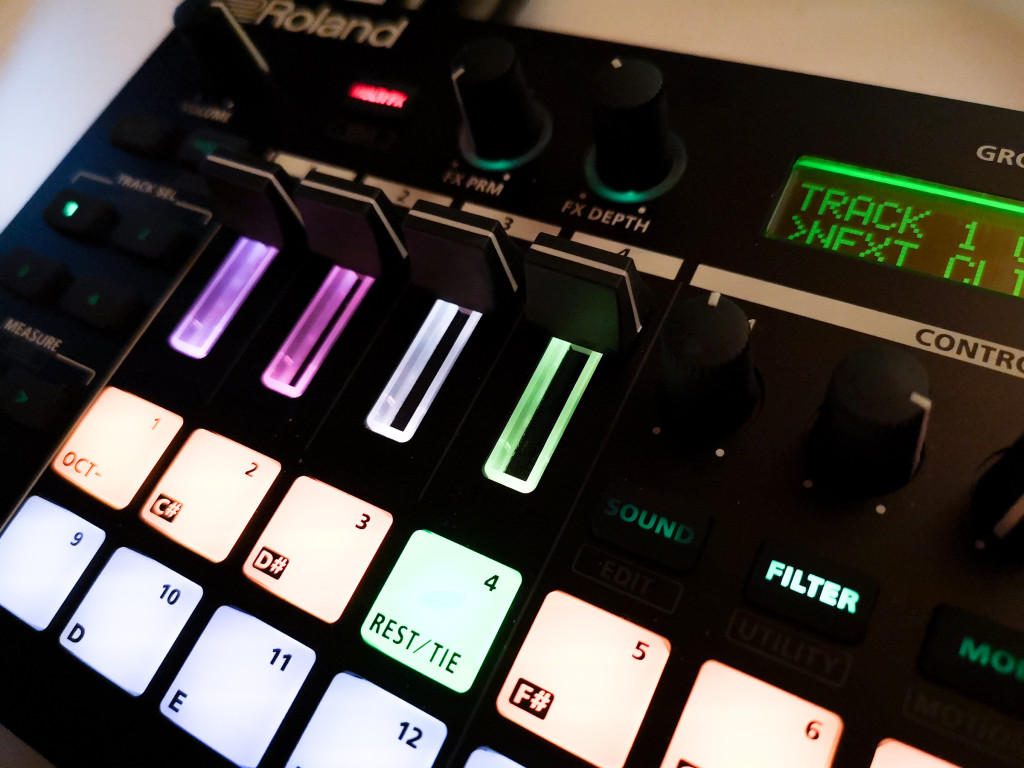
The size and form factor of the MC-101 also make it a logical add-on to my utterly beloved TR-8S – which should also silence any complaints about why the TR-8S didn’t add some of the features on the MC-707. Here, things make sense – looping and pitched sequencing and pattern triggering all get their own dedicated controls, which the TR-8S lacks anyway.
I also very much appreciate having faders instead of just encoders, unlike the Novation Circuit. Also, with all due respect to Novation, it’s a relief having something where the knobs are labeled and there’s a screen. Whatever charm you get from turning encoders without knowing what will happen, I do prefer… this way instead.
I’ll do a more complete review and video shortly, once I’ve really worked through this in detail.
But there are some impressions to have right away:
The lo-fi time/pitch stretch is awesome. Confession: part of why I like old jamming gear is, low fidelity is often more musical than high quality. You get grungy pitch and time stretching that is very, very satisfying to use. It’s s*** in a good way. Watch for those demos; hopefully I convey that.
Effects are nicely accessible. The effects engine is clearly related to what’s on the TR-8S. It’s nothing so special, but there’s lots of variety and it’s definitely good enough. (You have your computer for applying fancy stuff later when you finish tracks; this works live without question.) The main thing about it is, you have easily accessible knobs to get at all the time. Also, that SCATTER track is not the same SCATTER as on the early AIRA series – none of this horrible EDM nonsense. It’s really just a way of sequencing and triggering different effects, which actually is useful.
Workflows are accessible, mostly. Triggering patterns and playing the tone and drum modes is intuitive and easy. Some of the sequencing and menu diving gets more involved, and I’ll cover that in the full review accordingly (and with some feedback from Roland).
Sample loading is inexcusably bad. It’s bad enough that the TR-8S makes you put sounds on an SD card, then go through a manual menu-diving approach to load those sounds into kits. On the MC-101/707, it’s worse. The whole appeal of a box like this to many of us is being able to take bits and pieces of tracks and sound designs and load them into hardware so we can ditch the computer and jam or perform live. Roland doesn’t have to do something elaborate – just give us a way to connect the USB cable and load samples from the computer directly without touching the menu system.
The only slight upside is, you can edit kits and loops on the hardware itself. But then… that shouldn’t be your only avenue.
Yes, there’s external MIDI sequencing! You can set each of the tracks to an external MIDI target. (Corrected to reflect MIDI operation. Documentation was a little sparse for the MC-101 and I didn’t find this initially, but Roland pointed out how to do it – fixed.)
This makes the MC-101 starts to look really invaluable in my rig, and probably yours, too.
The documentation is Roland documentation. Apologies. I would really like to see a more friendly approach to how to use this stuff.
All in all, this is a promising box. The absence of easy sample loading might have you considering waiting to see what Novation will do to follow up their cult favorite Circuit, since Novation at least do give you friendly Web interfaces for loading samples and storing patches. There is no reason whatsoever why Roland shouldn’t do the same – a Roland Cloud service for editing and backing up performances.
If you want to focus on sampling manipulation, I think you definitely want something like the Elektron Model:Samples we reviewed earlier this year. And even Roland can sell you something that’s better for sampling and sample manipulation.
But the MC series does look like a different beast – something that lets you trigger clips and loops alongside jamming with samples using pitch, all with multiple tracks.
And mainly I like that the MC-101 does the same things with four tracks and runs on batteries and takes up less space. (Sure, it lacks those sends/returns, but you’ve got loads of onboard effects anyway.)
More on how the MC-101 fits in and complements the TR-8S shortly.
Product pages:
https://www.roland.com/us/products/mc-707/
https://www.roland.com/us/products/mc-101/
I want my MC TV
Video roundup from the Internetz:
Follow through to their channel for performance, production, and sound content demos.
Oh yeah, so I better get my 101 video together next week, huh?